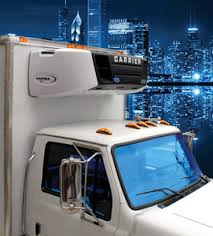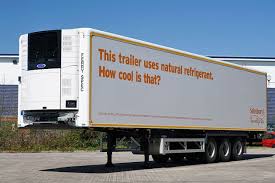Using food temperatures to make energy savings
FRANCE – Since January 2014, CEMAFROID, an independent expert in cooling and refrigeration, has been studying cold storage conditions necessary to make reductions in the electricity consumption in the retail sector, and is doing this by creating thermal Food models. The challenge is significant: global energy savings in the sector of up to 20%.
The commercial refrigeration sector is a promising area for saving energy, especially in times of peak electricity consumption. The energy savings deposit is very important indeed in wholesale distribution as an estimated 1,600 hypermarkets and 10000 supermarkets (including discount stores) annually consume more than 10 TWh in order to generate the cold temperatures needed for refrigeration appliances and cold rooms (35% of total energy consumption in the case of a hypermarket and 42.5% in the case of a supermarket). This sector consequently has a vested interest in designing an intelligent system of managing this reduction; either in order to obtain compensation related to the amount of energy saved or to benefit from a lower rate in their subscription. “We decided to investigate cold storage conditions in food and we examined the thermal modeling of products in very different storage conditions,” explained Thomas Michineau, Head of the expertise and study unit CERNAFROID.
Thermal modeling in different conditions should allow us to develop a modelling tool that better determines the temperature at any point of the food product depending on the temperature of the surrounding air. By evaluating this temperature more precisely, and the time the products are maintained at this temperature based on their thermo-physical properties (thermal conductivity, mass, volume, exchange surface …), we can envisage the prospect, without running health risks , of storing cold – to some degree – in these foods and therefore turning off the refrigeration systems while the food retains this cold temperature. For now, we have conducted tests on food at 2 ° C or 4 ° C under constant ambient temperature of 20 ° C, “underlines Thomas Michineau. The idea of course is to expand the test to other types of heat transfer (non-constant air temperature, frozen products at -18 ° C etc.). After these identifications, it was necessary to create a mathematical model to determine the temperature at any point of the food products and thus estimate the time the food retained its low temperature in the eventuality of a shutdown of the cooling system. This model, based on a study conducted in 1986 by CHOI and OKOS, was then validated after being compared to a series of experimental laboratory measurements in a climatic chamber, using flow and temperature sensors. “We would now aim to refine and create a more complex mathematical model by modeling what is actually happening in the refrigerated display cabinets of a store, which are frequently opened, and use it on all of the products that make up a typical shopping basket, “says Thomas Michineau.
In the future, this CEMAFROID study should (in collaboration with specialists in commercial cooling) result in the development of control software to autonomously manage cold temperature storage under favourable conditions and therefore lead to large reductions in commercial energy consumption.
A control software for reductions
The CEMAFROID first identified the types foods that represent the average of a consumer basket (meat products, dairy products, salads etc.) and the most common heat exchange conditions.















